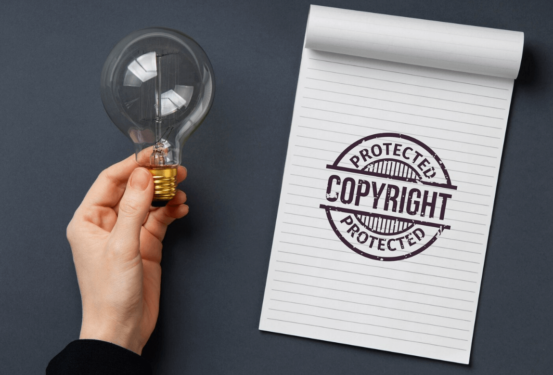Introduction
Ideas, creativity, and innovation are at the heart of human progress. A song that inspires, a logo that represents a brand, or a machine that solves a problem all begin with an idea. But ideas on their own are fragile. Without protection, they can be copied, misused, or stolen. This is where the concept of intellectual property (IP) comes in.
Intellectual property refers to the rights that creators, inventors, and businesses have over their creations of the mind. It ensures that the people who produce something original benefit from it and are not unfairly deprived of recognition or profit. IP law can seem complicated, but at its core it revolves around three main types of protection: copyright, trademark, and patent.
This article breaks down these concepts into simple terms, explains why they matter, and offers practical guidance for creators, entrepreneurs, and everyday consumers.
What Is Intellectual Property?
Intellectual property is different from physical property. While physical property refers to tangible items like land, cars, or houses, intellectual property covers intangible creations. These can include works of art, inventions, designs, software, and brand identities.
The central idea behind IP law is to give creators control over how their work is used. By granting exclusive rights for a certain period, IP laws encourage creativity and innovation. Without protection, fewer people would invest time and resources into creating new works, since others could copy them without consequence.
Copyright Explained
Copyright protects creative works such as books, music, films, paintings, software, and even architecture. When someone creates an original work, they automatically gain the right to decide how it is used. This includes the right to reproduce it, distribute it, adapt it, and publicly perform or display it.
For example, when a musician records a song, copyright ensures that others cannot legally copy or sell the song without permission. When a novelist writes a story, copyright prevents someone else from publishing it under their own name.
Copyright usually lasts for the lifetime of the creator plus a set number of years after their death. The exact duration varies by jurisdiction, but it is typically long enough to benefit both the creator and their heirs. However, copyright does not last forever. Once it expires, the work enters the public domain, meaning anyone can use it freely.
It is important to note what copyright does not cover. It does not protect ideas themselves, only the expression of those ideas. If you have an idea for a story, copyright does not prevent others from writing a different story with a similar theme. Only the specific expression—your words, characters, and unique details—are protected.
Trademark Explained
While copyright protects creative expression, trademarks safeguard identity in commerce. A trademark can be a word, phrase, symbol, logo, or even a sound that distinguishes the goods or services of one business from another.
Think of the swoosh of a sports brand or the golden arches of a fast-food chain. These symbols instantly convey brand recognition. Trademarks ensure that when customers see them, they know who is behind the product or service. This prevents confusion and protects both businesses and consumers.
Unlike copyright, trademarks can potentially last forever, as long as they are actively used and properly maintained. This makes them incredibly valuable business assets. For entrepreneurs, registering a trademark means building a brand identity that cannot be easily copied by competitors.
Trademarks do not cover every word or image. They only protect marks that are distinctive and used in commerce. Generic terms cannot be trademarked. For example, you cannot trademark the word “apple” for fruit, but you can for computers, since it is distinctive in that context.
Patent Explained
Patents protect inventions. They give inventors the exclusive right to make, use, and sell their inventions for a specific period, usually 20 years from the filing date. Patents cover new and useful processes, machines, compositions of matter, or improvements of existing ones.
For example, if an engineer designs a new kind of engine that is more efficient, a patent would prevent others from manufacturing or selling the same engine without permission. If a scientist develops a new drug, a patent ensures they can control its production and distribution.
Patents encourage innovation by allowing inventors to benefit financially from their creations. At the same time, they eventually expire, which allows society as a whole to benefit from the invention once it enters the public domain.
Not everything can be patented. Abstract ideas, laws of nature, and artistic works fall outside the scope of patents. Inventions must also meet criteria of novelty, usefulness, and non-obviousness to qualify.
Why Intellectual Property Matters
Intellectual property is not just for large corporations or famous artists. It affects everyone. For businesses, IP can be one of the most valuable assets. A strong brand identity protected by trademarks can create loyalty and trust. Innovative products protected by patents can generate revenue and attract investors. Creative works protected by copyright can provide long-term income streams.
For consumers, IP provides assurance. It helps ensure that when you buy a product, it comes from the brand you trust, not an imitation. It ensures that creators are rewarded for their work, encouraging the production of more art, literature, and technology.
Without intellectual property protection, markets would be flooded with counterfeits and copies, and creators would lose the incentive to innovate.
Common Intellectual Property Disputes
Disputes over intellectual property are common in today’s interconnected world. Some frequent examples include:
-
Plagiarism and unauthorized copying: When someone reproduces a creative work without permission.
-
Counterfeit goods: Fake products that imitate branded items, often of inferior quality.
-
Trademark conflicts: Businesses using similar names or logos that confuse consumers.
-
Patent infringement: Competitors producing or selling inventions covered by another’s patent.
Such disputes often end up in court, but they can also be resolved through negotiation or settlement. For businesses, protecting IP early can prevent costly legal battles later.
How to Protect Your Intellectual Property
Protecting intellectual property requires active effort. Creators and businesses should first identify what types of IP they own. For a musician, it may be songs and recordings. For a business, it may be logos, slogans, and product designs. For an inventor, it may be new machines or processes.
Once identified, the next step is registration. While copyright arises automatically in many cases, registering it provides stronger protection in disputes. Trademarks and patents require formal applications and examinations, but the benefits are significant. They provide legal recognition and allow enforcement against infringers.
Monitoring is equally important. IP can be infringed upon without your knowledge, especially in global markets. Businesses often track marketplaces and online platforms to spot unauthorized use of their marks or products.
When infringement occurs, legal remedies such as cease-and-desist letters, settlements, or lawsuits may be necessary. In many cases, quick action can stop the harm before it spreads too widely.
The Balance Between Protection and Access
While IP rights protect creators, they must also balance the interests of the public. Excessive protection can stifle innovation, while too little can discourage creativity. Copyrights eventually expire so works enter the public domain, enriching culture. Patents end so inventions can be widely used and improved. Trademarks remain valid only with genuine use in commerce.
This balance ensures that society benefits both from the protection of innovators and from the eventual free access to their creations.
Everyday Examples of Intellectual Property
IP is not limited to famous works or groundbreaking inventions. It surrounds us daily. The novel you read is copyrighted. The logo on your shoes is a trademark. The phone you use likely contains dozens of patented technologies. Even recipes, jingles, and software codes fall under different types of intellectual property.
Understanding these protections helps consumers appreciate the value behind what they buy and helps creators recognize their own rights.
Conclusion
Intellectual property may seem complex, but its role is straightforward. It rewards creativity, encourages innovation, and protects identity. Copyright ensures that creators control how their artistic works are used. Trademarks safeguard the symbols and names that distinguish businesses. Patents provide inventors with the opportunity to benefit from their inventions.
For individuals and businesses alike, understanding these protections is essential in today’s world. Whether you are writing a book, launching a brand, or inventing a product, intellectual property gives you the tools to secure your work and ensure it receives the recognition and protection it deserves.
By making these concepts simple and accessible, we can all better appreciate the importance of intellectual property and the role it plays in shaping culture, commerce, and innovation.



